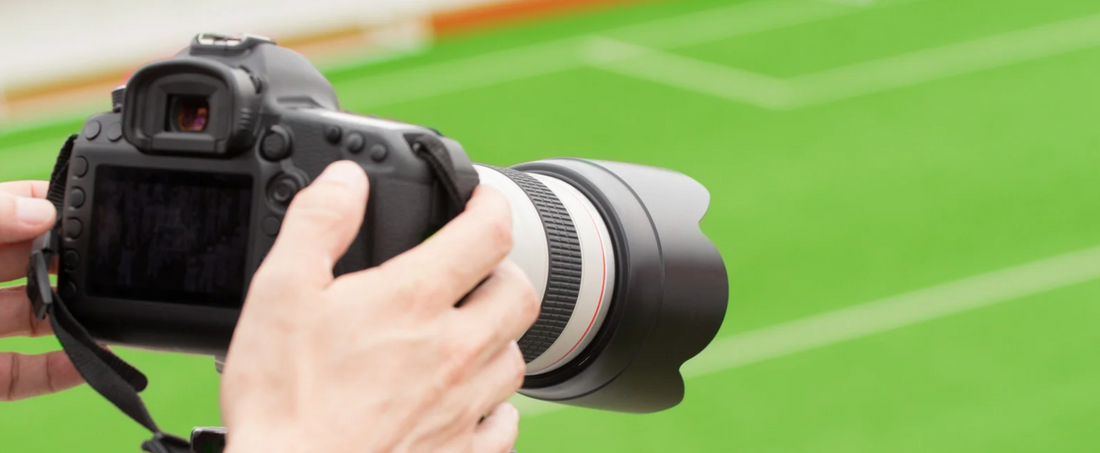
Pickleball Photography 101: Capturing Action Shots on the Court
Share
Pickleball is a game of rapid-fire exchanges, expressive reactions, and bursts of athleticism that make for visually compelling content. Whether you're a hobbyist with a smartphone or an aspiring sports photographer with a DSLR, capturing the essence of the game requires more than a quick shutter. It calls for a keen understanding of timing, angles, lighting, and movement.
This guide will walk you through the fundamentals of pickleball photography and equip you with practical techniques to elevate your on-court captures from ordinary to exceptional.
Understanding the Rhythm of the Game
To photograph pickleball effectively, you must first understand its unique rhythm. The game oscillates between soft-touch finesse at the net and sudden explosive drives. Knowing when the action spikes helps you anticipate moments before they unfold.
Key moments to focus on:
- Paddle-to-ball impact during a serve or smash
- Split-second stretches or lunges for a drop shot
- Animated reactions after a point won or lost
- Coordinated doubles movement, particularly at the kitchen line
Observing the natural flow of the match allows you to preempt rather than react—an essential habit for capturing truly dynamic imagery.
Choosing the Right Gear
While high-end camera equipment enhances flexibility and quality, excellent pickleball photos can be achieved with various setups if used knowledgeably.
DSLR or Mirrorless Cameras
- Use a telephoto lens (70–200mm or longer) to capture close-ups from outside the court
- Set the camera to continuous shooting mode to snap multiple frames in rapid succession
- Adjust to a high shutter speed (1/1000s or faster) to freeze action cleanly
Smartphones
- Utilize burst mode or sports mode to capture action sequences
- Activate manual focus or tap-focus to minimize blur
- Use external lens attachments for added reach or wide-angle effects
Regardless of the gear, knowing how to use it to track motion and manage lighting is what truly sets your shots apart.
Mastering Shutter Speed and Focus
The backbone of any successful action photo is a fast shutter speed. This ensures clarity in high-motion moments and prevents blurring during fast volleys or quick footwork.
Recommended settings:
- Shutter Speed: 1/1000s or faster
- Aperture: f/2.8–f/5.6 to let in light and softly blur the background
- ISO: Adjust depending on lighting; lower in sunlight, higher in indoor courts
Autofocus tracking is a game-changer. Enable it when using DSLR or mirrorless cameras to maintain sharpness on moving players or the ball.
Finding the Best Angles
Pickleball courts offer a variety of vantage points. Explore more than one to create a visually engaging story:
Baseline or Sideline Shots
These classic perspectives are perfect for capturing serves, full-court footwork, and lateral motion.
Net-Level Shots
Shooting from a low angle near the net can highlight dinks, volleys, and face-to-face action in doubles.
Overhead or Elevated Views
From a balcony, chair, or drone (where permitted), overhead shots showcase strategic positioning and symmetry between players.
Close-Ups and Details
Don’t neglect the quieter moments. A tight shot of a hand gripping the paddle or a player’s focused gaze adds emotional nuance to your photo set.
Harnessing Natural and Artificial Light
Lighting is critical to image clarity and color fidelity. Here's how to make the most of both environments:
Outdoor Courts
- The golden hour (shortly after sunrise or before sunset) provides flattering natural light
- Overcast days offer soft, even light with fewer shadows
- Avoid shooting directly into the sun unless using it creatively for silhouettes
Indoor Courts
- Increase ISO cautiously to compensate for dim light
- Use a fast lens with a wide aperture
- Avoid flash during live play—it distracts athletes and may be prohibited
Balancing exposure while preserving motion detail is an art that improves with practice and experimentation.
Capturing Emotion and Storytelling
The best pickleball photos go beyond technical sharpness. They evoke emotion, context, and story. Look for:
- Players exchanging high fives or cheers
- Reactions to a net-cord winner or close call
- Concentration during a serve or paddle tap post-match
- Supporters and spectators interacting with players
These candid, in-between moments enrich the narrative of the game and reflect the communal heart of the sport.
Editing Essentials
Post-processing is where good photos become great ones. Use editing software to:
- Crop for better composition
- Adjust exposure and contrast for clarity
- Sharpen motion elements subtly
- Correct color balance for natural skin tones and vibrant gear
Maintain realism. Over-editing can detract from the authenticity of the action.
Tips for Respectful Court Photography
- Ask for permission if photographing players up close
- Avoid obstructing play or moving during rallies
- Mute shutter sounds when using cameras indoors
- Stay outside court boundaries unless given explicit access
Respect for the game and its participants ensures you remain welcome and trusted within the community.
Final Thoughts: Framing the Fast-Paced Spirit of Pickleball
Pickleball photography blends technical mastery with intuitive timing. As the sport continues to grow in energy, popularity, and visual appeal, so does the opportunity to capture its charisma through compelling images.
Whether you’re documenting a competitive match or a lighthearted community rally, your lens is more than a tool—it’s a portal into the personality of the game. Frame with intention, shoot with passion, and let your photos tell the story of pickleball one pop at a time.












